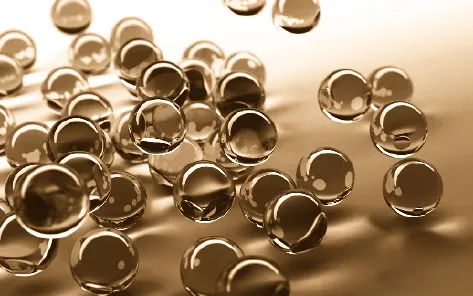科学知多少:到底天空是什么颜色?
by Suzanne Elvidge BSc
翻译:思苇
科学知多少:到底天空是什么颜色?
Science Project: What Colour Is the Sky?
by Suzanne Elvidge BSc
翻译:思苇


“天空为什么是蓝色的?”这个问题几乎困惑了我整个童年。父母不知道这个问题的答案。母亲在我的追问下,对我说:“妈妈不知道哦,你好好读书,以后学会了告诉妈妈好吗?”嗯,我有一个好妈妈。(喂,跑题了!)兴冲冲上学堂,结果书本上也没有教,又没胆去问老师,就这么不了了之了。童鞋们,你知道天空是什么颜色吗?
White light is made up of a mixture[混合]of different colours. Light travels in waves, and different colours have different wavelengths[波长]. Things seem a particular colour because of the light they refect[反射]or scatter[散射]—a leaf appears green because it reflects green light.
白光是由不同颜色混合而成的。光以波的形式进行传播,不同的颜色具有不同的波长。物体显出特定的颜色是因为它们会对这个颜色进行反射或者散射——叶子之所以看起来是绿色的,是因为它反射绿光。
Scattering Light
Shine a torch[手电筒]through an empty glass or bottle and look at the colour of the light in the bottle. Hold a piece of paper on the other side of the bottle and look at the colour of light that has passed through[通过]. Fill the glass or bottle with water and shine the torch through it. What colour is the light passing in the bottle or glass,and what colour is the light on the paper? Add a drop or two of milk and mix it thoroughly[充分地], and shine the torch through it again—what happens to the light in the glass or bottle, and the light on the paper?
Particles in suspension[悬浮]reflect light—this is called the “Tyndall Effect” (think of how car headlights[车头灯]reflect off fog, which is a suspension of water droplets[微水滴]in air).
Light travels directly through water, with little reflection and scattering, and the colour does not change. Milk in water is a suspension of fat and protein[蛋白质]particles[微粒]in water. The suspended particles should change the colour of the light in the bottle or glass to a bluish[带蓝色的]tinge[淡色], with the light on the paper having a reddish[微红的]tinge.
The blue part of the light (shorter wavelength) from the torch should be refected and scattered by the particles in the suspension, more than the red, orange and yellow parts of the light (longer wavelength). When this scattered light reaches people’s eyes, it makes the mixture seem blue, particularly at the edges. The particles allow more of the red, orange and yellow light through, so the light on the paper will have more of these colours in it.
The light at the centre of the glass or bottle may also seem to have a reddish tinge—this is because it has passed through more particles than the light at the edges, so more of the blue light has been scattered away.
浅谈光散射
用手电筒照射一个空杯子或者空瓶子,观察瓶子里的光是什么颜色。将一张纸放在瓶子对面,观察透过瓶子的光是什么颜色。在杯子或瓶子里装满水,用手电筒照射过去。透进瓶子或杯子里的光是什么颜色?照在纸上的光又是什么颜色呢?加入一两滴牛奶,充分搅拌,再用手电筒照射过去——容器中的光和照在纸上的光发生了什么变化呢?
悬浮的粒子能够反射光,这就是所谓的“丁达尔效应”(想一想汽车前灯在大雾天如何将光反射出来——雾正是由悬浮在空气中的小水滴形成的)。
光可以直接透过水进行传播,没有经过什么反射和散射,因而颜色不会发生改变。水中的牛奶就是悬浮的脂肪和蛋白颗粒。这些悬浮粒子会让瓶子或杯子里的光微微发蓝,而投射在纸上的光则会显出带红的色调。
在手电筒所照射出来的光线中,比起红色、橙色和黄色的部分(波长较长),蓝色的部分(波长较短)更常被悬浮粒子反射和散射。当这种散射光传递到我们的眼睛时,就会让这杯混合物看上去显蓝色,在杯子边缘尤为明显。这些粒子能让大部分的红光、橙光和黄光通过,所以照在纸上的光就会带有这几种颜色。
在杯子或瓶子中心的光看上去也会微微发红——这是因为和照在容器边缘的光比起来,中心光线要穿过更多粒子,所以更多蓝光会被散射出去。
Blue Skies
Air molecules[微粒]also affect light. They absorb[吸收]the light and then release[释放](scatter) it in another direction. This is called the “Rayleigh Effect”. Air molecules absorb and release blue light more often than red, orange and yellow light. As this light is scattered, it reaches people’s eyes, making the sky seem blue. The red, orange and yellow light carries straight on without being scattered by the air molecules, so people do not see as much of it.
蓝天的奥秘
空气中的微粒对光线同样会产生影响。它们能够吸收光,然后将其向着另外一个方向释放(散射)出去,这被称为“瑞利效应”。这些微粒所吸收与释放的更多是蓝光,而不是红光、橙光和黄光。这道经过散射的光线传递到人们的眼睛,就会让天空看起来显蓝色。而直接穿过去的红光、橙光和黄光由于没有被空气微粒所散射,所以人们很难接收到这样的光线。
行政公益诉讼回顾与展望—基于“一决定三解释”及试点期间相关案例和《行政诉讼法》修正案的分析…黄学贤(41)
Light from the horizon passes through more air, so it’s more likely to be scattered away, making the sky there seem paler[苍白的]in comparison[相比之下].
Sunrise and Sunset
In the day, light from the sun comes from above, so it passes through less air, and has been scattered by fewer air molecules. In the morning and evening, light from the sun comes from near the horizon, so it travels through a lot more of the atmosphere[大气层], and more of the blue and green light is scattered in different directions. By the time the light reaches people’s eyes, a lot of the blue and green light has been lost, and only the red, orange and yellow light is left, making the sky and clouds look red, orange and yellow.
The Tyndall Effect also creates brightly coloured sunrises and sunsets, when water vapour[水蒸气]and particles from pollution[污染物]or volcanic eruptions[火山爆发]refect the red and orange light.
在地平线附近的光线要穿过更多空气,因而更容易被散射出去,这就让那里的天空相比之下显得更加发白。
日出与日落
白天的时候,太阳光自上而下照射下来,所以它要穿过的空气比较少,受到空气微粒的散射也比较少。而在早上和傍晚,太阳的光线由近地平线照射出来,要穿过更为大量的大气进行传播,于是更多蓝光和绿光会被散射到各个方向。等到这道光线到达人们的眼睛时,大部分的蓝光和绿光已经消失,只剩下红光、橙光和黄光,让天空和云彩呈现出红色、橙色和黄色。
丁达尔效应还会带来色彩斑斓的日出与日落——水蒸气和污染或者火山喷发带来的颗粒会对红光和橙光进行反射。
约翰·丁达尔(John Tyndall,1820—1893),英国物理学家,英国皇家学会物理学教授,著名物理学家、化学家迈克尔·法拉第的学生和朋友。1869年,丁达尔发现当一束光线透过胶体,从入射光的垂直方向可以观察到胶体里出现一条光亮的“通路”,而溶液则没有这条“通路”,这种现象后来被称为“丁达尔现象”,也叫“丁达尔效应”(Tyndall Effect)。丁达尔效应是区分胶体和溶液的一种常用物理方法。
瑞利,原名约翰·威廉·斯特拉特(John William Strutt),尊称瑞利男爵三世(Third Baron Rayleigh),1842年11月12日出生于英国埃塞克斯郡莫尔登(Malden)的朗弗德林园。瑞利以严谨、广博、精深著称,并善于用简单的设备做实验获得十分精确的数据。他是在19世纪末达到经典物理学颠峰的少数学者之一,在众多学科中都有卓越成果。他在声学、波的理论、光学、光的散射、电力学、电磁学、水力学、液体流动理论方面都做出了不可磨灭的贡献,其中尤以光学中的瑞利散射和瑞利判据、物性学中的气体密度测量方面的影响最为深远。1904年,他因和拉姆塞同时发现了惰性元素氩(Ar)而荣获该年度的诺贝尔物理学奖。

Know More

